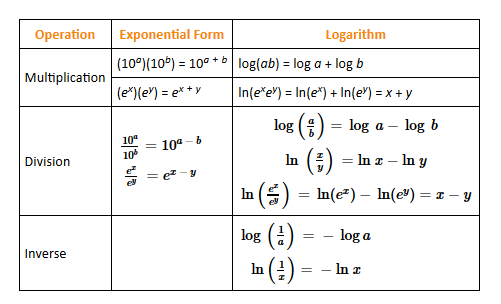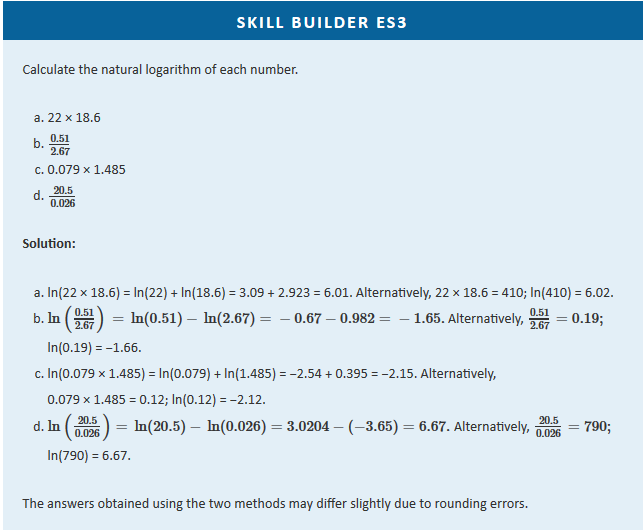Tags | |
UUID | 1a0db826-f145-11e9-8682-bc764e2038f2 |
Natural Logarithms
|
Many natural phenomena exhibit an exponential rate of increase or decrease. Population growth is an example of an exponential rate of increase, whereas a runner’s performance may show an exponential decline if initial improvements are substantially greater than those that occur at later stages of training. Exponential changes are represented logarithmically by ex, where e is an irrational number whose value is approximately 2.7183. The natural logarithm, abbreviated as ln, is the power x to which e must be raised to obtain a particular number. The natural logarithm of e is 1 (ln e = 1). Some important relationships between base-10 logarithms and natural logarithms are as follows: 101 = 10 = e2.303 ln ex = x ln 10 = ln(e2.303) = 2.303 log 10 = ln e = 1According to these relationships, ln 10 = 2.303 and log 10 = 1. Because multiplying by 1 does not change an equality, ln 10 = 2.303 log 10Substituting any value y for 10 gives ln y = 2.303 log yOther important relationships are as follows: log Ax = x log A ln ex = x ln e = x = eln xEntering a value x, such as 3.86, into your calculator and pressing the “ln” key gives the value of ln x, which is 1.35 forx = 3.86. Conversely, entering the value 1.35 and pressing “ex” key gives an answer of 3.86.On some calculators, pressing [INV] and then [ln x] is equivalent to pressing [ex]. Hence eln3.86 = e1.35 = 3.86 ln(e3.86) = 3.86 Skill Builder ES1Calculate the natural logarithm of each number and express each as a power of the base e.
Solution:
Skill Builder ES2What number is each value the natural logarithm of?
Solution:
Calculations with Natural LogarithmsLike common logarithms, natural logarithms use the properties of exponents.
The number of significant figures in a number is the same as the number of digits after the decimal point in its logarithm. For example, the natural logarithm of 18.45 is 2.9151, which means that e2.9151 is equal to 18.45.
|
This Collection is empty
- Comments
- Attachments
- Stats
No comments |



